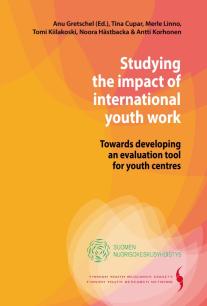Studying the impact of international youth work

his publication presents the expertise and knowledge youth centres have gained by organising international youth work processes. To uncover this knowledge, a research module was included in the Erasmus+ funded project: Boost Your Possibilities! – Youth Centres for Youth Mobility and Intercultural Learning: Impact of Internationality (2015–2017). The project was implemented in three countries: Finland, Estonia and Slovenia. During the research process, various methods of inquiry were used to investigate the scale of impact of international youth work conducted by the youth centres. The young people, youth centre personnel and decision makers’ experiences concerning this impact and perceived development needs were gathered using a variety of methods: story-telling, a pilot survey, interviews and interactive evaluation. These methods were tested and fine-tuned during this study and were found to be working well for the youth centres and would continue to do so in the future. Three forms of impact were found: youth work results, promotion of expertise in youth work and the economic impact of youth centres – the latter impact in the context of national youth centres in Finland. It was also suggested that if three forms of impact emanate from international youth work then all three forms of impact must be included in the evaluation process. As a result, youth centre partners in cooperation from local and international networks could also be asked, among other questions, how successfully youth centres have promoted international youth work expertise. In such an inquiry, the use of a similar survey and interactive evaluation method employed here to reveal the impact of youth work results, is implicated. Yet, there were two youth service features missing from the research procedure that should be included in the future: accessibility and equality mapping. The process of mapping will generate more knowledge on why some young people, though keen to participate, cannot gain access to youth work services.